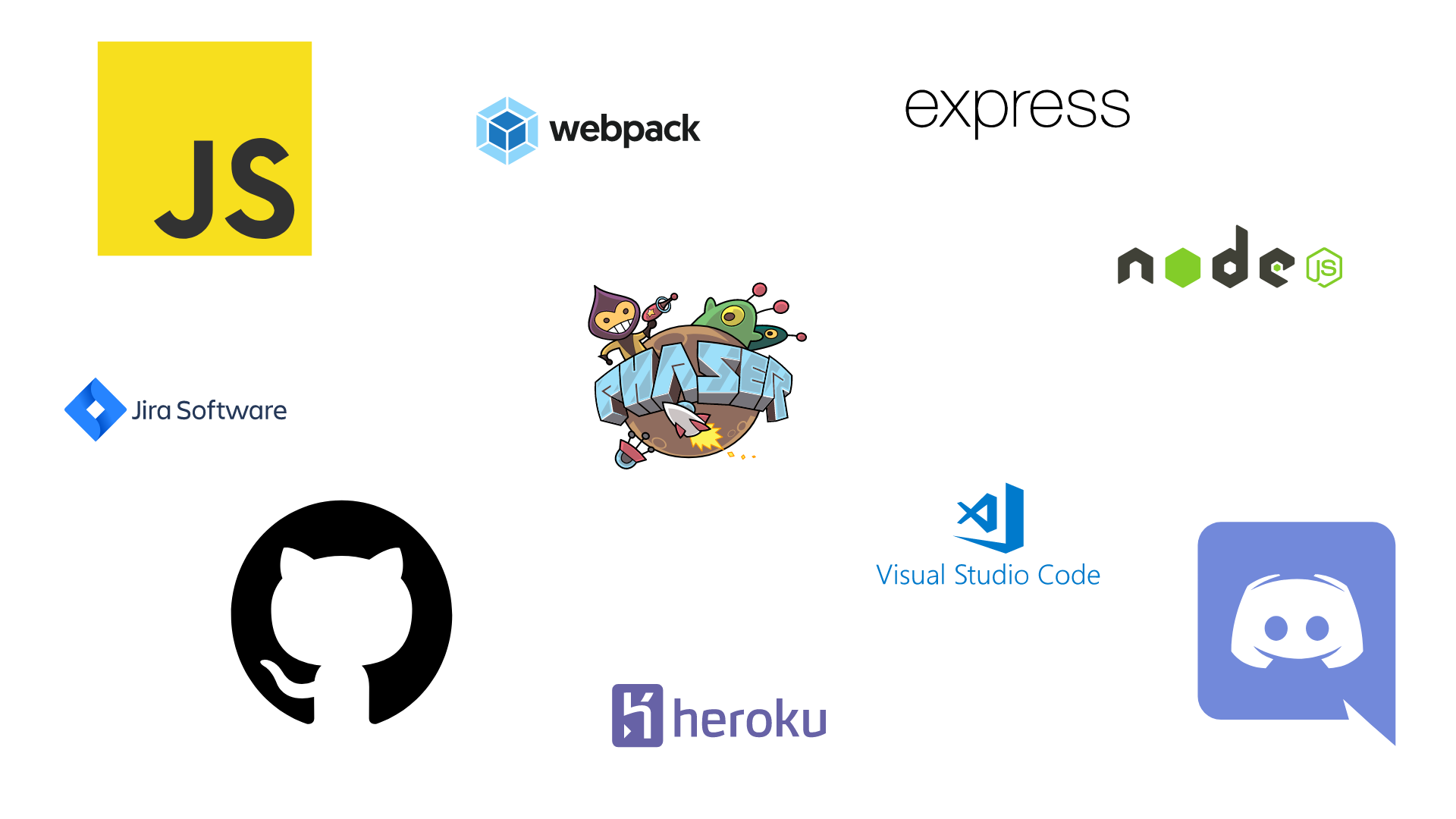
Phaser 3 & JavaScript
Node.js & Express.js
Heroku
Webpack
Development Tools
- GitHub/git
GitHub was already a well-known platform for all of us, since it was put close to our hearts in our earlier studies. As we needed a code-sharing and version-control system, we chose it without second thought. In our processes, new features were added in new branches, reviewed by at least another member of the group and merged with the master. This way, the whole group was in control of the latest functioning version of the game.
- Miro
In our Project Management classes we used Miro Board for exercises, homework and information.
- Confluence and Jira
For further organisation in our SCRUM workflow, Jira was a welcome software. With its Roadmap, Backlog and Board functions, the planning of our project was rather simple. Confluence was a great addition to this planning process since it gave the opportunity for shared documents, files and general note keeping.
- Discord/Zoom
Since meetups in person were still out of question due to Covid-19, we were in need of communication platforms. Zoom was already prepared by our supervisor and was used for meetings with Professor Dr. Jung as well as our project management supervisor, Mrs. Metzner. For our personal group meetings as well as all other communications, we preferred Discord as a familiar platform and main communication device between most students of the HTW. Multiple voice and text channels gave us the opportunity to organise topics and save important decisions.